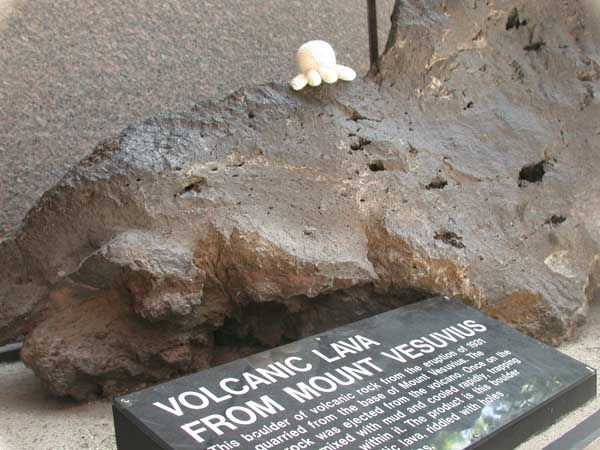Vesuvius is the only active volcano in mainland Europe, and has produced some of the continent's largest volcanic eruptions. Located on Italy's west coast,
it overlooks the Bay and City of Naples and sits in the crater of the ancient Somma volcano. Vesuvius is most famous for the 79 AD eruption which destroyed the Roman cities of Pompeii and Herculaneum. Though the volcano's last eruption was in 1944, it still represents a great danger to the cities that surround it, especially the busy metropolis of Naples.
Vesuvius is part of the Campanian volcanic arc, a line of volcanoes that formed over a subduction zone created by the convergence of the African and Eurasian plates. This subduction zone stretches the length of the Italian peninsula, and is also the source of other volcanoes like Mount Etna, the Phlegraean Fields (Campi Flegrei), Vulcano, and Stromboli. Under Vesuvius, the lower part of the subducting slab has torn and detached from the upper part to form what is called a "slab window". This makes Vesuvius' rocks slightly different chemically from the rocks erupted from the other Campanian volcanoes.




No comments:
Post a Comment